 |
 |
 |
| Archive images - June 2016 |
||
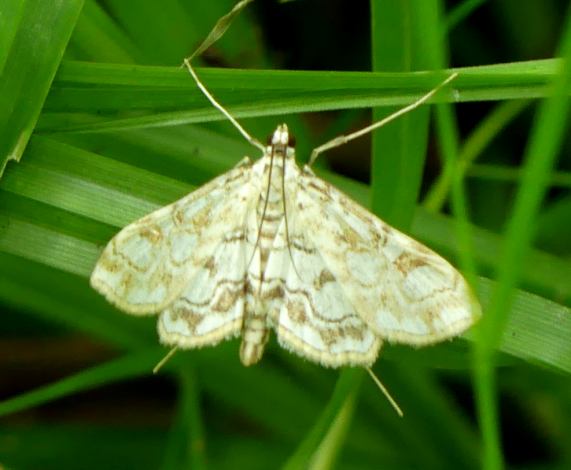 A Brown China-mark moth seen in King's Wood, Heath and Reach on 28 June 2016, near the ponds. China-mark moths are unusual in that the larvae are aquatic, feeding on and living around water plants. |
||
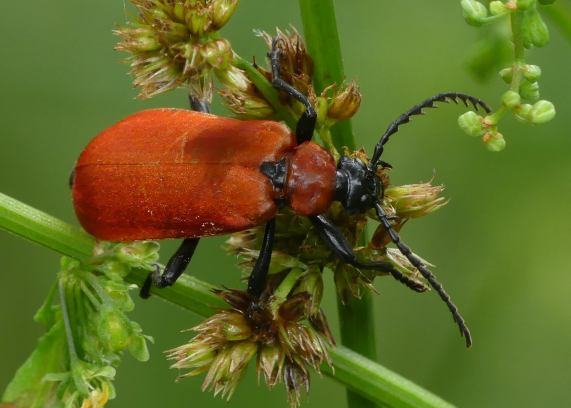 There are two species of cardinal beetle found locally. This is the black-headed cardinal beetle (not the red-headed one) seen in King's Wood, Heath and Reach on 28 June 2016. |
||
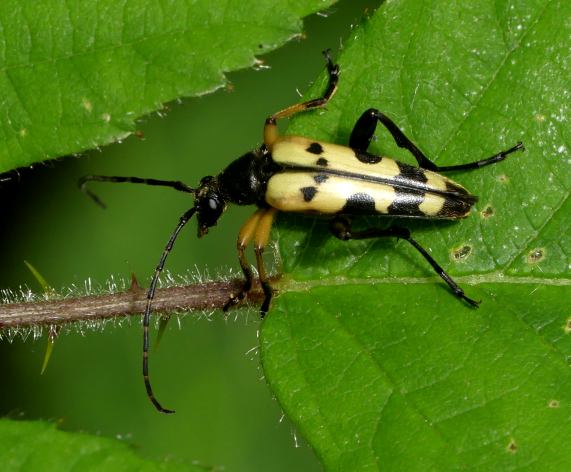 Longhorn beetles have very long antennae. This one (unsurprisingly) is called the black and yellow longhorn beetle. It was in King's Wood, Heath and Reach on 28 June 2016. |
||
 Lift-off! A southern hawker dragonfly making its first flight, Alwins Field, 28 June 2016, just before 9am. The egg that became this creature was probably laid two years ago on the edge of the pond. It hatched and entered the pond, where the larva grew for two years, eating tiny crustaceans and smaller insect larvae in the water. Last night it emerged from the water and climbed up a reed stem. It broke out of its larval case (on the left) early in the morning. It flew off to the woods where it will mature and will return to water to breed in a few weeks, and then it will die. |
||
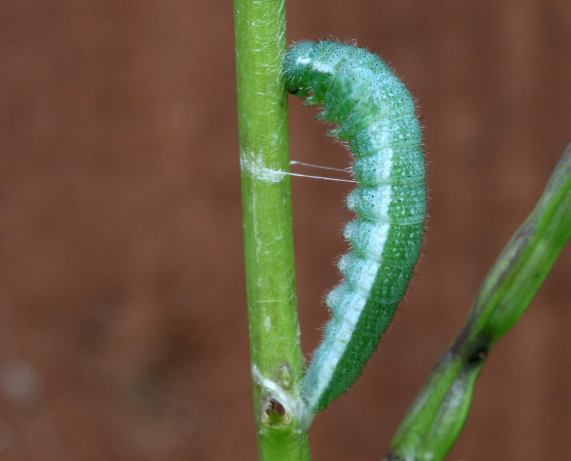 Our second orange-tip caterpillar decided to turn into a chrysalis on the jack-by-the-hedge that it had been eating - this is quite unusual. First it anchors itself to a stem at the tail end and roughly in the middle using its silk. Alwins Field, 24 June 2016. |
||
 A lesser stag beetle that had been hiding under vegetation on a Leighton Buzzard railway station platform - 21 June 2016. |
||
 A large skipper butterfly in the wildlife garden area on platform 1 of Leighton Buzzard railway station - 21 June 2016. |
||
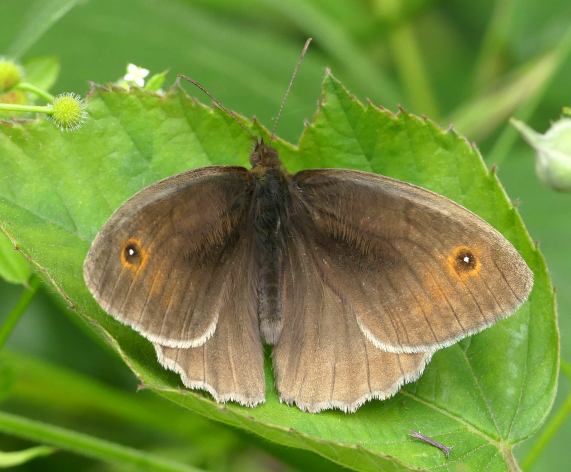 The meadow brown is one of our most common butterflies, but this was the first one I'd seen this year. Linslade Woods, 21 June 2016. |
||
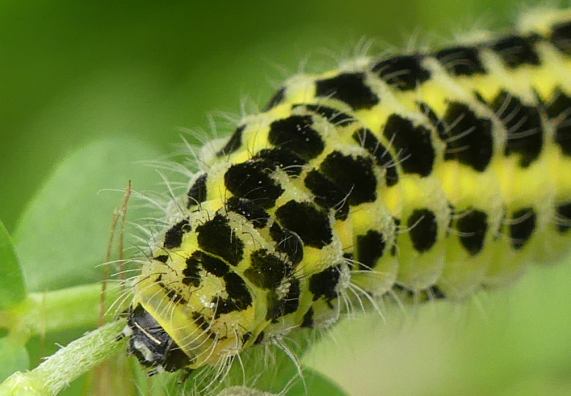 |
||
| This bright yellow and black caterpillar turns
into a black moth with red spots - the six-spot burnet
moth. It was feeding on its usual food-plant,
bird's foot trefoil, in Linslade Woods on 21 June 2016. |
||
 This is a caterpillar of the orange-tip butterfly munching the tip of a seed pod on a jack-by-the-hedge in our garden at Alwins Field. It was photographed on 19 June 2016. This was quite a large caterpillar and it will probably soon make its way onto other vegetation to form a chrysalis, which will pupate into an adult butterfly next spring. |
||
 This is a small caterpillar of the large white butterfly on jack-by-the hedge in our garden at Alwins Field, 19 June 2016. The hungry large white caterpillars prefer to eat the leaves of the plant - seen by the jagged edges in the photo. This caterpillar and its friends will probably end up as adult butterflies later this year. |
||
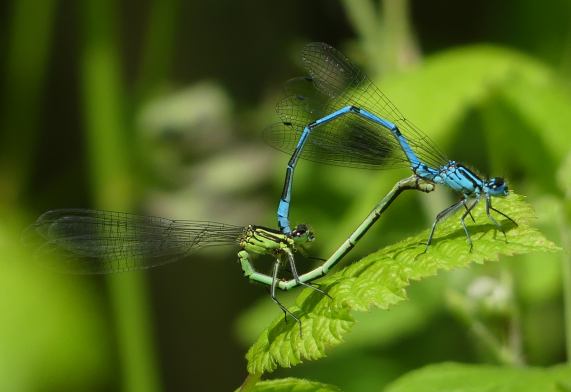 Azure damselflies mating; Sandhouse Lane NR, 15 June 2016. |
||
 A male common blue damselfly at Sandhouse Lane, 15 June 2016. |
||
 A goldfinch in our garden at Alwins Field, 15 June 2016. |
||
 A tree bumble-bee feeding on centaurea in our garden, Alwins Field, 15 June 2016. |
||
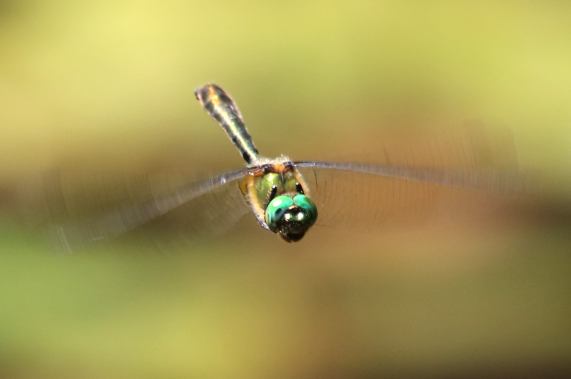 The first thing you notice about a downy emerald dragonfly coming towards you is the bright green eyes. Then it's a question of "Where did it go?" Photographed at Sandhouse Lane NR, 9 June 2016. The two dark prongs that look like horns are its front legs, which it tucks up behind its head when they are not needed to catch prey. |
||
 The red-and-black-froghopper (Cercopis vulnerata) is the UK's largest froghopper but it is still quite small. This one was photographed in Linslade Woods, 7 June 2016. |
||
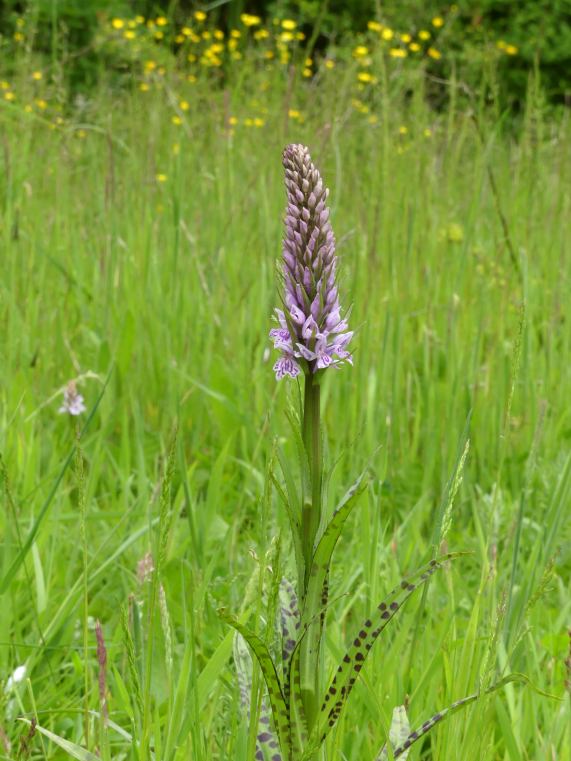 A common spotted orchid in flower, Linslade Woods, 7 June 2016. The spots are on the leaves. |
||
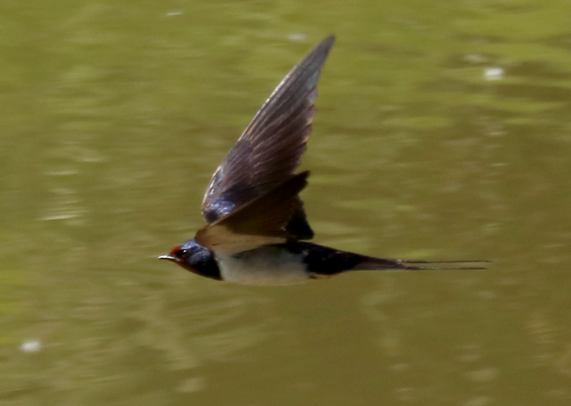 A barn swallow (note the long tail streamers) hunting over the canal at Grove Church, 6 June 2016. |
||
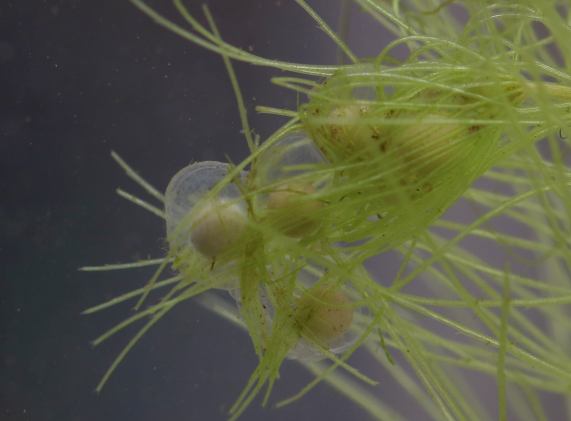 A cluster of eggs of common newts from our garden pond, Alwins Field, 4 June 2016. Newts lay their eggs individually on submerged weeds. A jelly can be seen surrounding each egg. |
||
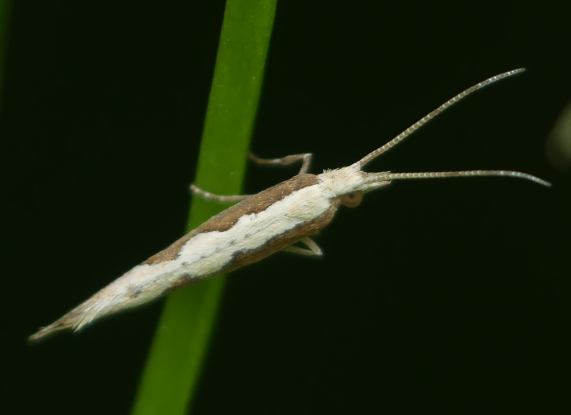 A micro-moth called the diamond-back moth (Plutella xylostella) in our garden, Alwins Field, 3 June 2016. There has been a huge influx of these tiny creatures from the continent recently. |
||
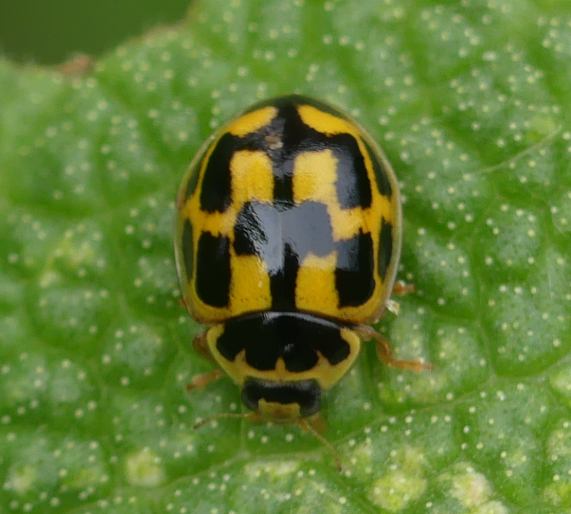 A 14-spot ladybird, Alwins Field, 3 June 2016. It was resting on a sage leaf. |
||
 A cornflower in the bee-friendly area in Parson's Close Recreation Ground, 2 June 2016. Cornflowers are very rarely seen in the wild nowadays. |
||
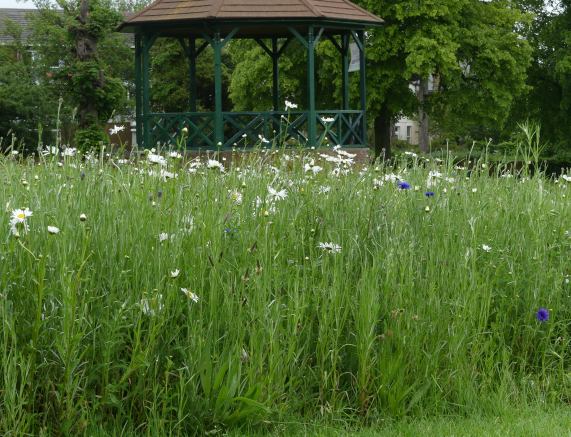 The patch of bee-friendly wild flowers planted by Leighton-Linslade Town Council in Parson's Close Recreation Ground. Photographed with the bandstand in the background, 2 June 2016. |
||
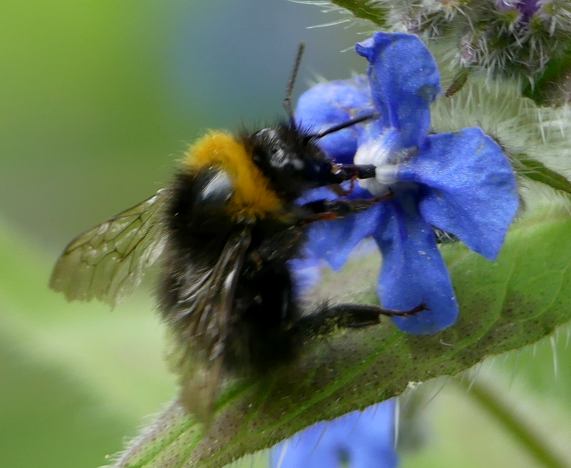 Bumble-bee worker at work on the green alkanet in All Saints Leighton Buzzard churchyard, 2 June 2016. |
||
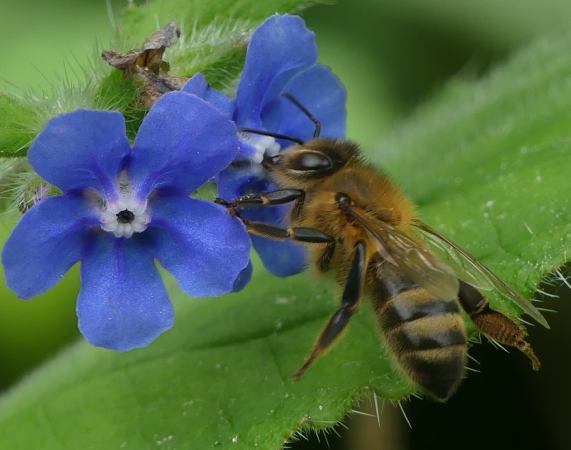 Honey bee worker also at work on the green alkanet in the churchyard at All Saints, Leighton Buzzard, 2 June 2016. |
||
Return to archive page ¦ Return to home page